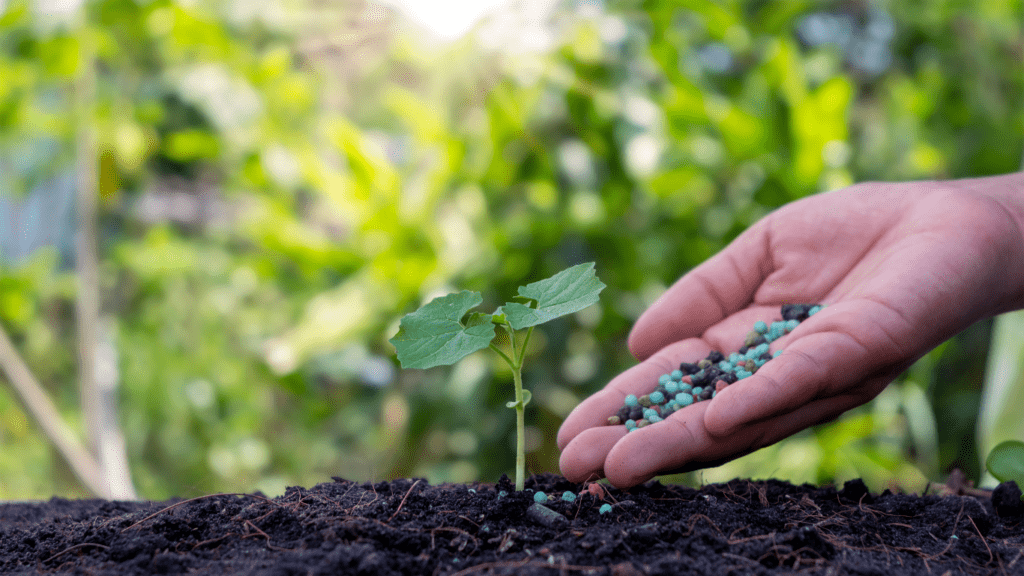Are you looking to cultivate a lush and vibrant garden while also being environmentally conscious? In my experience, using sustainable plant fertilizers can be the key to achieving a healthier garden ecosystem. By nourishing your plants with organic and eco-friendly fertilizers, you not only promote plant growth but also support the overall well-being of your garden.
In this article, I’ll share insights on the benefits of sustainable plant fertilizers and how they can contribute to the long-term health of your garden. From natural ingredients to environmentally friendly practices, incorporating sustainable fertilizers into your gardening routine can make a significant difference. Let’s explore how you can enhance your garden’s vitality while minimizing your environmental impact with sustainable plant fertilizers.
The Importance of Sustainable Plant Fertilizers
Sustainable plant fertilizers play a crucial role in maintaining a thriving garden ecosystem.
Benefits for Plant Health
I enhance plant health using sustainable fertilizers derived from organic and eco-friendly sources.
Environmental Impact
My choice of sustainable fertilizers reduces environmental harm while promoting a greener garden.
Types of Sustainable Fertilizers
In gardening, using sustainable fertilizers is essential for promoting a healthy garden ecosystem. Two key types of sustainable fertilizers that I recommend are organic fertilizers and homemade compost.
- Organic Fertilizers
Organic fertilizers are derived from natural sources like compost, manure, or bone meal. They provide essential nutrients to plants without the use of synthetic chemicals. Examples of organic fertilizers include seaweed, fish emulsion, and composted chicken manure. These fertilizers not only nourish plants but also improve soil structure and promote beneficial microbial activity, contributing to a thriving garden environment. - Homemade Compost
Homemade compost is a cost-effective and eco-friendly way to enrich garden soil. By recycling kitchen scraps, yard waste, and other organic materials, I can create nutrient-rich compost that boosts soil fertility and enhances plant growth. Composting also reduces waste sent to landfills and minimizes the need for chemical fertilizers, aligning with sustainable gardening practices. With homemade compost, I can ensure that my garden thrives while reducing environmental impact.
How to Choose the Right Fertilizer for Your Garden
When selecting a fertilizer for your garden, it’s crucial to consider your soil’s specific requirements and the nutrients your plants need to thrive. Assessing your soil’s needs and comparing product labels can help you make an informed decision.
Assessing Your Soil’s Needs
To determine the right fertilizer for your garden, start by understanding your soil’s composition and pH levels. Conduct a soil test to identify any deficiencies in essential nutrients like nitrogen, phosphorus, and potassium. Based on the test results, you can choose a fertilizer that addresses these specific deficiencies and promotes healthy plant growth.
Comparing Product Labels
When shopping for fertilizers, carefully examine the product labels to ensure they meet your garden’s requirements. Look for organic options that are free of synthetic chemicals and environmentally friendly. Pay attention to the nutrient content ratios, indicated by the N-P-K (nitrogen, phosphorus, potassium) values on the label, to match them with your plants’ needs. Additionally, consider slow-release fertilizers for a gradual nutrient release that sustains plant growth over time.
Application Tips for Maximum Effectiveness
When considering the application of sustainable plant fertilizers, timing and technique play crucial roles in maximizing their effectiveness.
Best Time to Fertilize
I recommend fertilizing plants in the early spring as they start actively growing. This allows them to utilize the nutrients for robust growth during the growing season. Additionally, a fall application can help perennial plants build up nutrient reserves for the following year.
Application Techniques
For optimal results, I suggest uniformly spreading the fertilizer over the soil surface around the base of the plants, ensuring even distribution. Incorporating the fertilizer into the soil slightly and watering it afterward can help the nutrients reach the plant roots efficiently. It’s essential to follow the specific instructions on the fertilizer package for proper dosages and application frequency to avoid over-fertilization and potential harm to the plants or surrounding environment.

 Carolyna Riteralo is a passionate contributor to the project, focusing on sustainable urban development. With her background in architecture and urban planning, she provides valuable perspectives on integrating green spaces and eco-friendly designs into urban environments. Carolyna works collaboratively with the team to implement strategies that enhance community well-being and foster a connection with nature. Her dedication to creating greener cities makes her a vital member of the project, as she helps shape initiatives that promote resilience and improve the quality of urban life.
Carolyna Riteralo is a passionate contributor to the project, focusing on sustainable urban development. With her background in architecture and urban planning, she provides valuable perspectives on integrating green spaces and eco-friendly designs into urban environments. Carolyna works collaboratively with the team to implement strategies that enhance community well-being and foster a connection with nature. Her dedication to creating greener cities makes her a vital member of the project, as she helps shape initiatives that promote resilience and improve the quality of urban life.